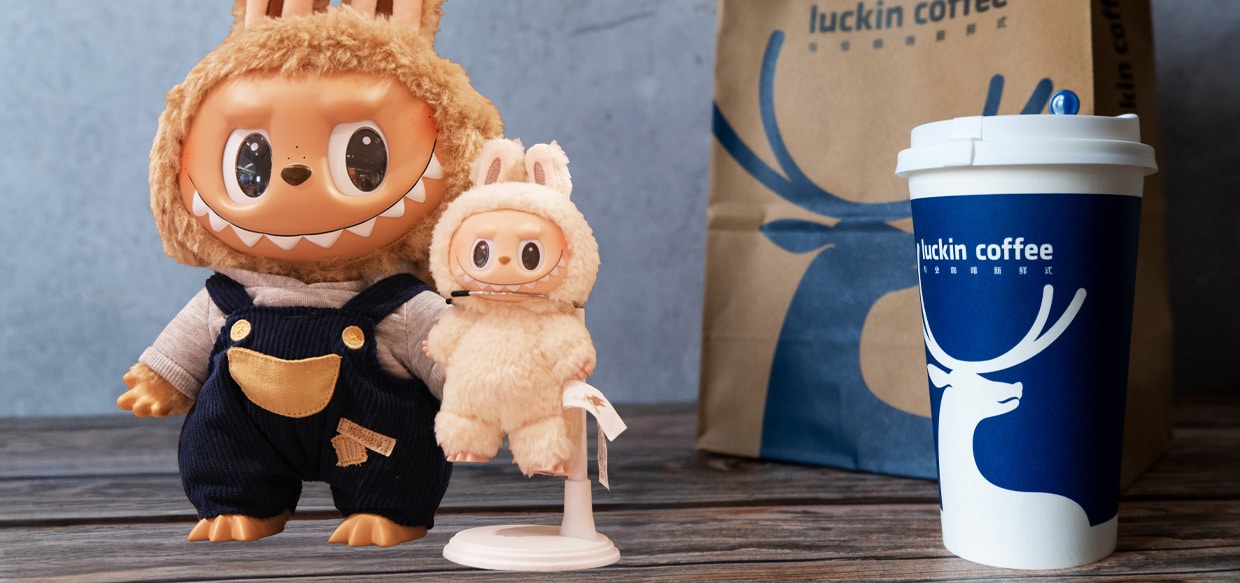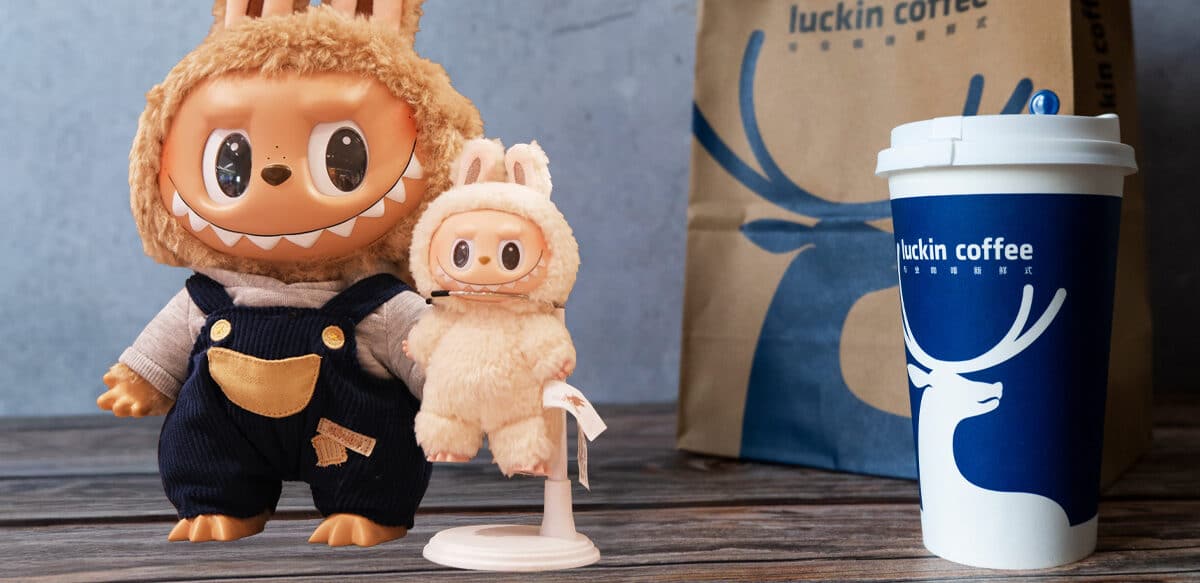
This is not Financial Advice
Cuddly, Cutting-edge, Creative: China’s Soft Power Spreading Through Global Brands
October 2025

By Joan Ng and Emma Huang . Based in Singapore, Joan has over 18 years of experience in communications and media, serving in both editorial and leadership roles, and working with clients across a range of industries. Emma Huang is a seasoned communications professional based in the Beijing office, specialising in corporate communications, reputation management and media relations
The top choice for a caffeine pick-me-up in China today is Luckin Coffee – a Chinese coffee chain that in 2023 pipped Starbucks to become the country’s largest by both store count and revenue.
Luckin is increasingly also a top choice outside China. The company is expanding rapidly across Southeast Asia and the US, and winning customers over with its cheaply priced, innovative beverages.
Adding to the score for Chinese brands going global are Chinese tea brand Chagee, blind box purveyor Pop Mart and electric vehicle maker BYD.
These companies have hit on a powerful mix of good value, customer understanding, and clever branding and marketing, and they are taking that mix around the world. In this article, we look at Luckin, BYD and Pop Mart; what’s behind their success; and what business leaders and communicators can learn.
Fast Coffee, the Ugly-Cute Labubu and a Leader in EVs
For branding, marketing and communications professionals, the success of these Chinese brands demonstrates the potential of a well-engineered go-to-market strategy.
Luckin rightly identified a younger generation as its target audience and core customer base for a digital-first ordering experience – young professionals who want affordable, high-quality coffee, fast. It invested heavily and successfully in social media campaigns and celebrity brand ambassador partnerships. Even as it expands internationally, the brand keeps growing in China. It opened 1,743 stores in the past year, bringing its total to 24,097 stores in the country.
Pop Mart has capitalised on the virality of its ugly-cute Labubu to drive user-generated content, enhancing the appeal of its blind boxes and other toys. The blind box strategy, coupled with Labubu and other limited-edition dolls, has triggered a collector craze. Unboxing videos are going viral and celebrity fans are working overtime, with examples including BLACKPINK’s Lisa, Rihanna and Dua Lipa – something never before achieved by a toy brand. Labubu alone drove a 726% revenue surge in 2024, contributing 25% of Pop Mart’s total revenue.
BYD’s communications and campaigns have emphasised the brand’s superior quality and battery technology, successfully moving the needle of public perception. From being viewed as cheap, Chinese EVs are now matching or beating brands such as Tesla in terms of quality, at a lower cost. BYD has also successfully used brand collaborations while consistently playing up its commitment to sustainability. In fact, BYD was the first major auto company to officially cease production of pure internal combustion engine cars in 2022.
As consumers increasingly shun Tesla due to its association with Elon Musk – who, among other things, has begun to raise concerns about climate “alarmists” – BYD has shone as a climate-responsible and customer-focused company and brand.
Changing the Public Perception of Brand China
One at a time, these companies contribute to a change in consumer sentiment and public perceptions of brand China.
As US brands retreat from environmental and social missions, for instance, Chinese companies are stepping up. The country is also shaking off a reputation as a producer of cheap knockoffs.
Instead, Chinese companies are now increasingly seen – especially at the consumer grassroots level – as market leaders able to deliver value and quality at a palatable price. In fact, across many categories, Chinese brands are already global leaders.
BYD sold the most electric vehicles globally last year, with a market share that was nearly double that of Tesla’s. Pop Mart has exclusive rights to Labubu and is possibly the only globally recognised brand in the blind box arena.
International Media Picking Up on the Sentiment
This emerging dominance has in the past year been recognised by international media, leading to coverage that is increasingly positive – a shift that shows how easily power can shift among consumer brands.
International media coverage on China and Chinese businesses often focuses on issues such as geopolitical tensions, supply chain risks, overcapacity and regulatory crackdowns. Yet, there is also increasing acknowledgement of China’s ability to innovate, especially in EVs, consumer tech and lifestyle goods. The shift in consumer sentiment and media reporting is quantifiable. In a January 2025 report, 69 Chinese brands made it into the Brand Finance Global 500 – putting China second only to the US. For Chinese companies going global, now is perhaps a golden era for international engagement.
Key Takeaways and Learnings for Communicators
What can business leaders and communicators learn from these examples, and how public sentiment and media coverage has changed in recent times?
First, we see how strategic and clever use of social media and brand collaborations can cause virality, move the needle of public perception at the grassroots level, and subsequently lead to global media coverage. It’s important to keep abreast of developments and trends on all levels, across the globe.
Second, it’s about speed and agility. Case in point: Starbucks was founded over half a century ago, in 1971, and today operates some 17,000 outlets in its home market of the US. Luckin began operations in 2017, eight years ago, and already has over 24,000 stores in its home market. Brands and communicators need to recognise the speed at which new brands move, adapt and be agile.





